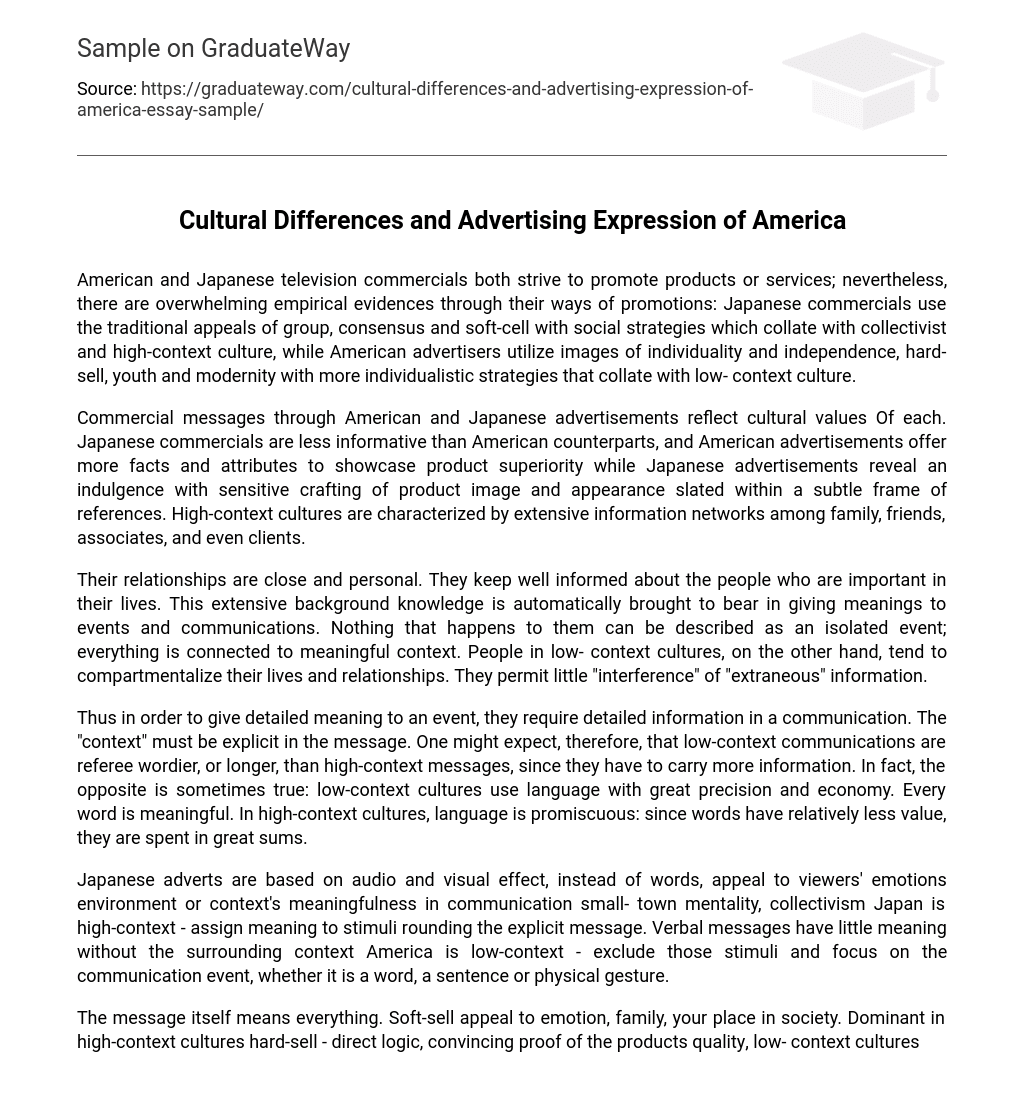Both American and Japanese television commercials aim to advertise products or services. However, there are clear differences in their approaches. Japanese commercials employ traditional appeals such as group consensus and soft-cell techniques, reflecting their collectivist and high-context culture. In contrast, American advertisers use images emphasizing individuality, independence, hard-sell tactics, youth, and modernity, aligning with a more individualistic approach typical of low-context culture.
Commercial messages in American and Japanese advertisements reveal the cultural values of each country. Japanese commercials tend to be less informative compared to American ones, focusing more on the delicate presentation of product image and appearance within a subtle frame of references. On the other hand, American advertisements provide a wealth of facts and attributes to highlight product superiority. Both countries reflect their high-context cultures, characterized by extensive information networks among family, friends, associates, and clients.
Their relationships are intimate and personal, as they stay well-informed about the significant people in their lives. This vast understanding is automatically utilized to interpret events and communications. Every occurrence to them is interrelated to a meaningful context; nothing is seen as an isolated incident. In contrast, individuals in low-context cultures tend to separate their lives and relationships, allowing minimal intrusion of irrelevant information.
Communication necessitates detailed information to provide thorough significance to an event. The message should explicitly incorporate the “context.” It could be anticipated that low-context communications would be lengthier or more verbose than high-context messages, as they need to convey additional information. Nevertheless, this is occasionally not true. Low-context cultures utilize language precisely and efficiently – each word holds meaning. Conversely, high-context cultures possess abundant language where words have relatively less worth and are used generously.
Japanese advertisements rely on audio and visual elements to appeal to viewers’ emotions and the meaningfulness of the environment or context in communication. Japan, known for its small-town mentality and collectivism, is considered a high-context culture, where meaning is assigned to stimuli surrounding the explicit message. In contrast, America is a low-context culture that focuses on the communication event itself, whether it is a word, a sentence, or a physical gesture, excluding the surrounding stimuli.
The message is crucial, conveying a range of elements: emotional appeal, family values, and societal positioning. In high-context cultures, a soft-sell approach resonates, evoking emotions, while low-context cultures favor a hard-sell tactic that relies on direct logic and compelling evidence for product quality. However, an emotional connection through music holds great significance in Japanese advertisements. Although Japan and America share similar needs, their approaches to satisfying them differ.





